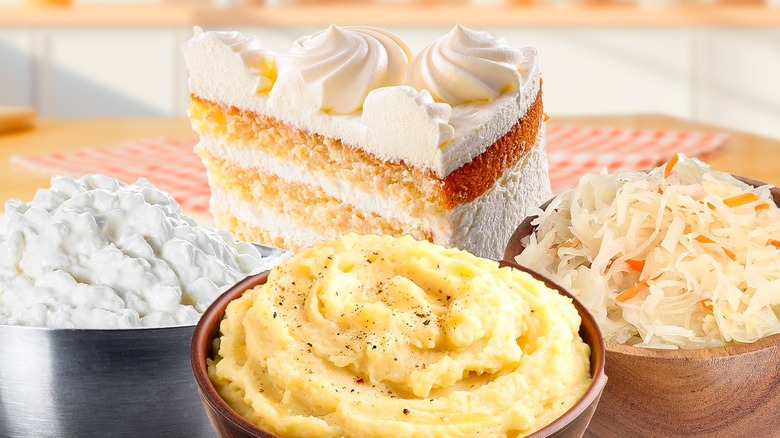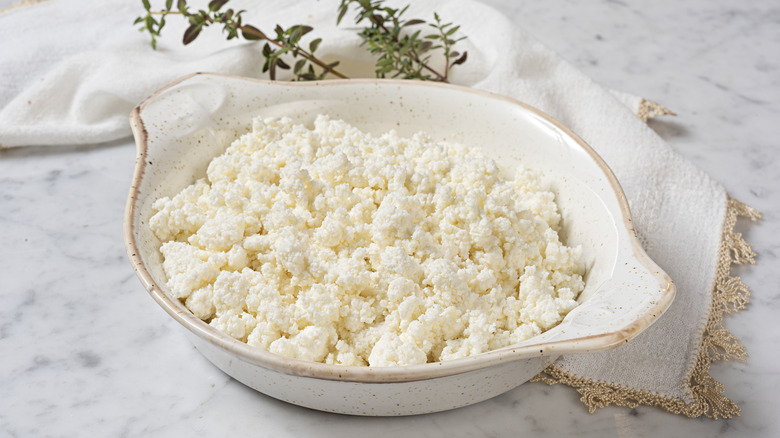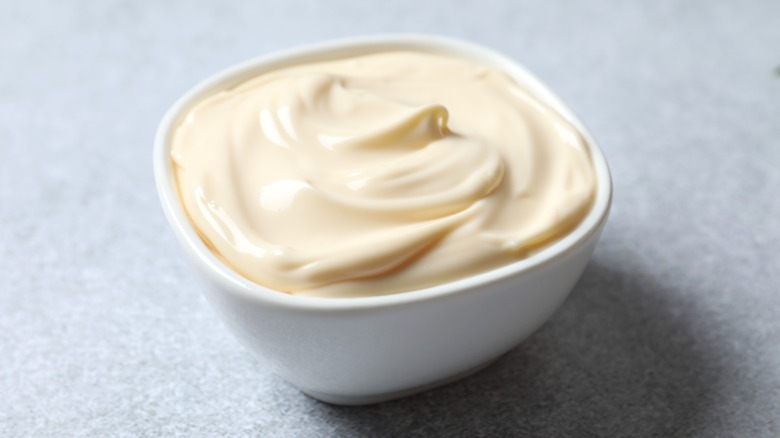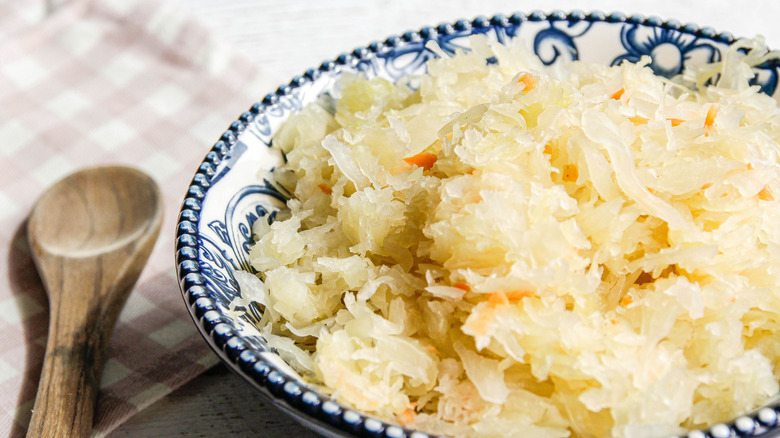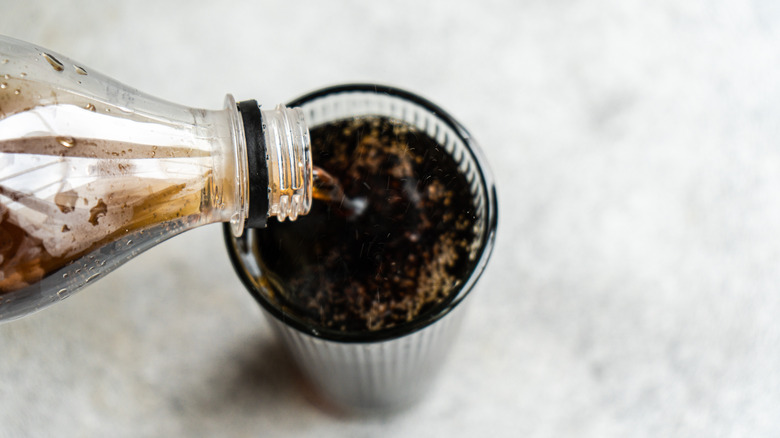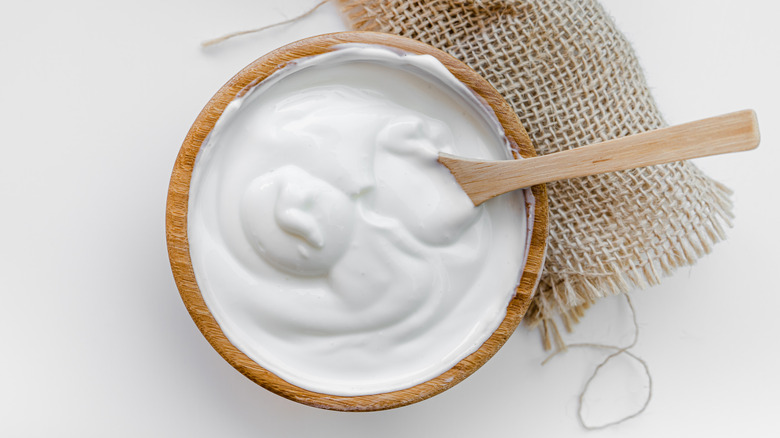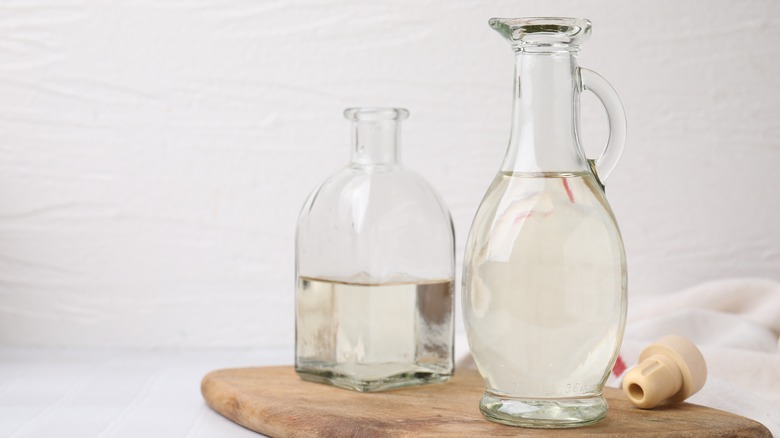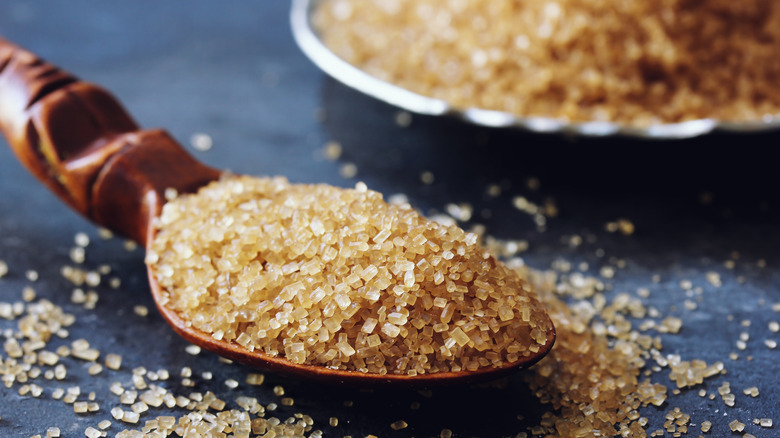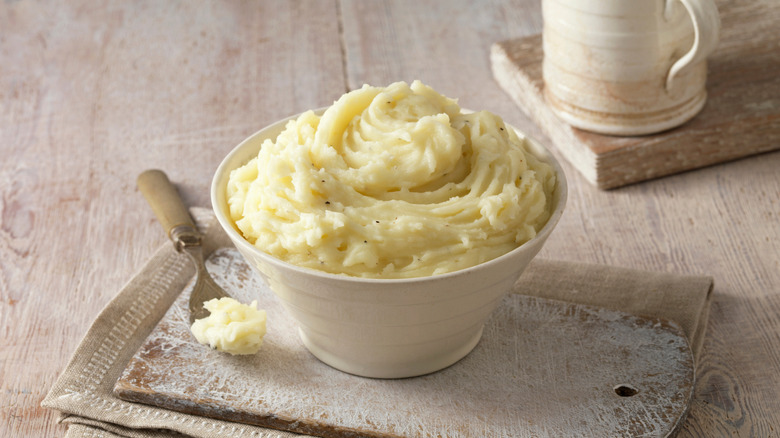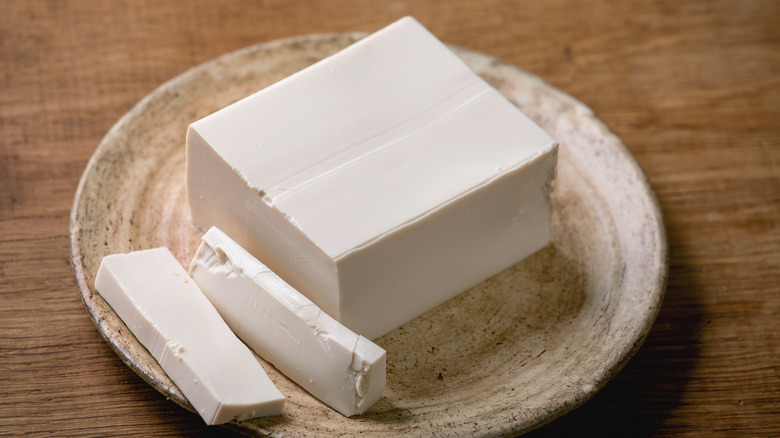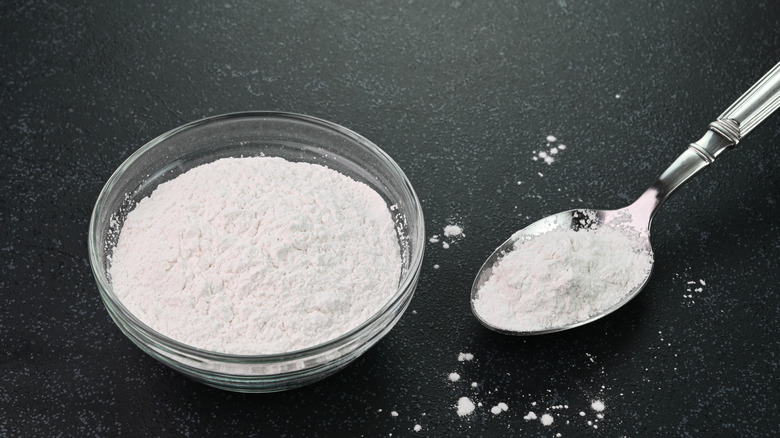11 Unexpected Ingredients That Keep Your Cake Moist, According To Chefs
If you've ever taken a bite of dry and crumbly cake, you know how disappointing of an experience it can be. Not only does it make it difficult for the flavors to shine, but it can fall apart when you try to cut it. After all, a quality cake should have a moist texture, or crumb, that's soft and silky yet strong. It should also maintain this moisture while it's stored, which ensures you can enjoy tasty leftovers without sacrificing quality.
Fortunately, there are many unexpected ingredients you can add to keep your cake moist. These options go beyond adding an extra splash of liquid, which, depending on the type of cake you're making, might not always be the best idea. Instead, certain ingredients can improve the structure and consistency of your cake by interacting with other components, like flour, to better hydrate your batter.
To help us learn about the most surprising ingredients to use to prevent dry cakes, we consulted a few experts, including Keiry Palma, chef-instructor of pastry and baking arts at the Institute of Culinary Education (ICE) in New York City, Dawn M. DeStefano, chef-instructor of baking and pastry arts at the Auguste Escoffier School of Culinary Arts, and Traci Weintraub, chef and the founder of Gracefully Fed, a meal-based delivery service and Los Angeles restaurant. Here are their suggestions for ingredients to try, as well as some tips for how to use them effectively.
Ricotta cheese
There's a reason why ricotta cake already exists. Ricotta cheese, which is known for its creamy texture and mild flavor, is key for making cakes extra moist and fluffy. It's all thanks to its high water content, which can hydrate the batter during baking, says ICE chef-instructor Keiry Palma. Ricotta also contains a high amount of fat, which further contributes to a deliciously tender cake. On that note, Palma recommends using ricotta made of sheep's milk instead of cow's milk. This is because sheep's milk ricotta is higher in fat, which makes it a better candidate for enhancing the moisture in cakes. You'll also want to use whole milk ricotta, as it has more fat than the skim variety.
You can replace a quarter to a third of the fat (either butter or oil) with ricotta, per Palma. You may need to experiment to determine the best ratio for your specific cake. Another option is to add ricotta cheese to boxed cake mix, which is particularly helpful if you're in a pinch and don't have time to measure the other ingredients. The best part is that this hack will work with a range of cake flavors, as ricotta cheese has a mild and milky taste that's wonderfully versatile. It's especially tasty in cakes with citrus or berries, says Palma, as proven by the popularity of lemon ricotta cake in Italy.
Simple syrup
As it turns out, the secret ingredient for a silky cake might be lurking in your cocktail cart. Simple syrup — a thick liquid sweetener made of equal parts sugar and water — can be used to add moisture to a cake. The trick is to dip a pastry brush in the syrup, then brush it on top of the cake while it's still warm. The liquid texture of the syrup will soak into the cake and prevent dryness. What's more, this technique makes it easy to elevate the flavor of your cake, especially if you use a flavored simple syrup. For example, try brushing lavender syrup on vanilla cake or strawberry syrup on chocolate cake for a delicious combination of flavors.
While there are many benefits to brushing a cake with simple syrup, it's possible to overdo it. Avoid adding too much simple syrup, as it can make your confection too wet, says chef Traci Weintraub. If you want to be absolutely sure the simple syrup efficiently moistens the cake, consider poking holes in the top before adding the syrup. You can also add 1 to 3 tablespoons of corn syrup to prevent the simple syrup from crystallizing on the exterior of your cake.
Mayonnaise
Adding mayonnaise to cake might sound questionable, but the technique can yield a delightfully moist sponge. The reason mayonnaise works so well in cake is due to its high fat content. Mayonnaise is primarily made of egg yolks, which contain lecithin, a substance that emulsifies (or binds) two liquids together. As a result, "adding mayonnaise [to cake] will bind ingredients together more cohesively, resulting in a smoother cake and more cohesive crumb texture," says Keiry Palma. Mayonnaise also improves the way fat covers the particles of flour, enhancing its overall moistness.
In Texas, using mayonnaise in chocolate cake is such a popular method that chocolate mayonnaise cake is also called Texas mayo cake. Additionally, the condiment works well in spiced cakes, which can mask the flavor of the condiment, or yellow cakes, which can complement the ingredient. Regardless of the type of cake you're making, you'll want to swap anywhere from ¼ to a ⅓ cup of the oil or butter with mayonnaise, says Palma.
Sauerkraut
Another unexpected ingredient that will keep your cakes moist is sauerkraut. After all, using vegetables (like zucchini and carrots) to maintain the moisture is a common practice, so it's certainly worth trying sauerkraut. First, the fermented condiment is high in moisture, which "... contributes to the batter's hydration and prevents it from drying after baking," says Keiry Palma. "Its high acidity aids in breaking down the gluten development caused by mixing flour, which creates a tender crumb structure."
The tanginess of sauerkraut works best in cakes with deep flavors, such as carrot, spice, or chocolate cake. The latter is a particularly popular candidate for sauerkraut, as the richness of the chocolate is balanced by the funky flavor of sauerkraut. Before adding the fermented cabbage to your cake batter, be sure to drain it first; this will remove the excess liquid and prevent a soggy cake. It's also a good idea to finely chop the sauerkraut, either by hand or with a food processor, to help it evenly disperse throughout the batter.
This trick is helpful if you don't bake cakes often, considering how long sauerkraut's shelf life is. When stored in an airtight container in the refrigerator, homemade sauerkraut can last for three to six months — which ensures that you can make soft and moist cakes for months on end.
Carbonated drinks
The secret to a moist cake might be found in a can or bottle, too. Bubbly drinks, like soda, seltzer, and carbonated water, can lower the pH of the cake, in turn tenderizing the crumb, says chef-instructor Dawn M. DeStefano. The bubbly carbonation will also act as a leavener. This will give the cake a bouncier and fluffier texture that's super satisfying to eat. Plus, depending on the flavor, a carbonated drink can enhance or complement the flavor of your cake.
For example, ginger ale will elevate the taste of carrot cake and spice cake, both of which already include warming spices like ginger. Strawberry soda or seltzer can intensify the flavor of strawberry cake or other fruit-based sponges. Root beer and cream soda will add a rich element to cakes, so consider using them in a spice, red velvet, or plain vanilla cake.
There are several ways to bake a cake with carbonated drinks. The easiest method is to follow a recipe for a soda-based cake, like Coca-Cola chocolate cake, as it will include the exact ingredients and ratios needed to ensure the soda works properly in the cake. Another option is to add the carbonated drink to boxed cake mix for an easy and moist two-ingredient cake. If you'd like to use your own recipe, try replacing one or all of the eggs with a carbonated drink; you'll need a ¼ cup of the liquid per egg.
Sour cream
Sour cream adds moisture to cake like mayonnaise and ricotta does. First, the ingredient adds liquid to the cake batter, which ultimately increases the hydration of the overall cake. Sour cream is also high in fat, which shortens the gluten strands in flour, paving the way for a more tender cake. Just be sure to skip the reduced fat sour cream and use the full-fat variety to reap this benefit.
The amount of sour cream you add to your batter will depend on if you're making a homemade cake or one using a boxed mix. If you're making it from scratch, add about a ½ cup of sour cream after the other ingredients have creamed together, per Dawn M. DeStefano. You can also use sour cream as a milk substitute using a 1-to-1 ratio. For a boxed cake mix, incorporate the sour cream at the same time as the eggs and liquid. Also, keep in mind that sour cream will add a slight tang to your cake. If you want to subdue this flavor, try adding extra vanilla extract to the batter.
Sour cream tends to separate, thus causing liquid to accumulate on the top of the container. This is whey, a protein-rich substance that naturally separates from curds during cheesemaking (or in this case, making sour cream). Before using sour cream in cake, always mix the whey liquid back into the sour cream until the texture is smooth and consistent. This will prevent excess liquid from being added to the batter.
Vinegar
Some cakes call for distilled white vinegar, which aids in leavening. But if your recipe doesn't already include the acidic ingredient, you might want to add it in. Vinegar increases the acidity of the cake batter, which restricts gluten development in the flour. Since overworked gluten can give baked goods a tough texture, the vinegar ensures the cake stays soft and moist. Vinegar will also react with the baking soda in the batter, which supports a more even rise.
As with many ingredients that keep cake moist, vinegar can be used in several ways. The simplest technique is to add 1 teaspoon distilled white vinegar to the dry ingredients, then prepare the recipe as usual. Alternatively, you can use vinegar as an egg substitute by combining 1 tablespoon vinegar, ½ teaspoon baking powder, and 1 tablespoon water per egg. The latter is especially helpful if you're out of eggs or want to make an egg-free version of a cake.
If you only have apple cider vinegar, you'll be glad to know that you can use it like white vinegar. The flavor of the ingredient won't be detectable in the finished cake. However, you'll want to avoid using vinegars with more intense flavors, such as red wine vinegar, balsamic vinegar, or rice vinegar, as these options can significantly alter the final taste of your cake.
Brown sugar
If chocolate is your cake flavor of choice, you'll want to keep brown sugar on hand. The ingredient contains more moisture than regular granulated sugar, which makes it an excellent tool for hydration. That's because brown sugar contains molasses: a liquid sweetener and byproduct of the sugar-making process. Keep in mind that dark brown sugar has a deeper caramel flavor than light brown sugar because it contains more molasses, which will be reflected in the taste of your cake.
In fact, brown sugar is often added to chocolate cake to moisten it. The caramel undertones work well with the rich notes of chocolate. It's also possible to use brown sugar in vanilla cakes, though it will deepen the color and flavor and transform it into a brown sugar cake. Regardless of your cake recipe, you can replace half the white sugar with brown sugar to add more moisture without weighing it down, according to Dawn M. DeStefano.
If you don't have the ingredient on hand, fear not; you can make brown sugar at home with white sugar and molasses. Simply combine 1 tablespoon of molasses with 1 cup of granulated white sugar to make light brown sugar. To make dark brown sugar, add another tablespoon.
Mashed potatoes
Put your potatoes to good use by adding them to cake. When mashed and used in a cake batter, the tuber will add both structure and moisture, creating a top-notch cake. As a bonus, mashed potatoes are quite flavorless, so they won't overpower the other ingredients in your cake. The key is to use mashed potatoes without any herbs, spices, or seasonings. Even milk or butter in the mashed potatoes can add too much moisture to the cake, so always use spuds that are completely plain.
In general, you'll need about ¾ cup of mashed potatoes per cake, says Traci Weintraub. For the smoothest texture, use a potato ricer before mashing it. Just be sure the potato is fully boiled and soft before pressing it through the ricer. Otherwise, it could break the ricer or create unpleasant lumps in your mashed potato cake.
Mashed sweet potatoes can be used in a similar way, but there are a few things to consider. Sweet potatoes are, well, sweet — so they'll work best in cakes that complement their flavor. Think spice, vanilla, or caramel cakes. The potato's sweetness can also balance the depth and richness of chocolate cakes. Additionally, the tubers have a bright orange color, so it will change the overall appearance of your final cake. This will be more noticeable in light-colored cakes, but it's virtually undetectable in chocolate varieties.
Silken tofu
Silken tofu is another ingredient that can keep your cake moist and prevent it from drying out. It contains more water than regular tofu because it isn't pressed during the manufacturing process. However, it's worth noting that silken tofu comes in three varieties: soft, firm, and extra-firm. You'll want to use the soft kind for your cake, as it can be pureed in a processor or blender until it forms a smooth texture. It's also best to buy plain silken tofu to avoid altering the flavor of your cake.
Silken tofu is often used as an egg replacer in cakes. About a ¼ cup of blended silken tofu can be substituted for one egg, says Traci Weintraub. Add it to the other wet ingredients, then prepare the cake as usual. It's important to note that the blended tofu can make cakes dense due to its thick and creamy texture, so avoid adding it to cakes that are meant to be airy.
Instant ClearJel
If you regularly make cakes, consider stocking up on Instant ClearJel; it's a home baker's secret weapon for creating bakery-worthy treats. "Instant ClearJel is a modified corn-based corn starch that was created to be a plant-based gelatin substitute," says Keiry Palma. It can thicken mixtures, but it doesn't set the same way as gelatin. "ClearJel forms a fine, delicate structure within the cake batter. This structure helps to trap moisture, preventing a cake from drying out and becoming crumbly," says Palma.
Instant ClearJel might sound like magic, but luckily, adding it to your favorite cake is simple. You'll need 1 tablespoon instant ClearJel for every cup of flour in the recipe. Avoid using more than this amount, as too much ClearJel can have the opposite effect, creating a tough and stiff cake. Stir the ClearJel with the flour first, which will prevent clumping, then continue adding the remaining ingredients. From there, add more liquid (1 tablespoon) to the wet ingredients.
